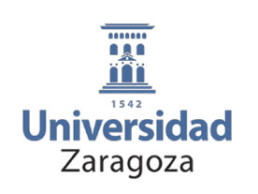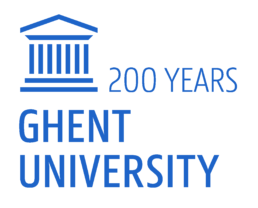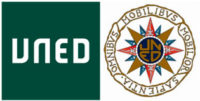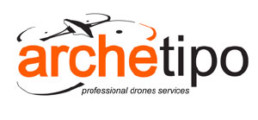
MY GEO Project
 – MY GEO Mobility
– MY GEO Mobility
The MY GEO Mobility is a training methodology targeted to students in higher education and aimed at fostering the acquisition of key skills on the use of GIS tools, through experiences of international mobility in private companies.
The methodology has been tested during the project activities, through the realization of two cycles of 300-hour internships hosted by the partner companies and held by 17 students from the partner Universities in international mobility.
The skills acquired through the mobility will be ratified by the partner universities which will grant the recognition of training credits for the involved students: in line with the prevision of the “MY GEO mobility”.
 – CHAIN OF ACTIONS
– CHAIN OF ACTIONS
The project partners have detailed a methodology for the acquisition of key competences related to the most common uses of GIS tools in the labor market, by students in higher education: through internships in private companies (learning-by-doing).
This methodology served as a theoretical basis for the formalization of the mobility agreements “MY GEO MOBILITY” between universities and partner companies and contains: the detail of the skills to be acquired, a programme of activities and a framework for the evaluation of the skills acquired during mobility.
During the project two cycles of international mobility, involving a total of 13 students (3 from University of Padova and 2 two from other tree partner Universites) were hosted in the four partner companies: each mobility had a duration of 300h (about 40 days of internship).
The activities carried out during the mobility were video-documented: the videos were internally used for the evaluation and amelioration of the mobility.
This is a compilation of the students commenting on their traineeship:
The WP dedicated to the present Intellectual Output is coordinated by the Ghent University and counted on the active contribution of all the partner organizations in the consortium.
A complete report on the mobilities, evaluations and feedback can be found HERE.
 – FOR A SUCESSFUL MOBILITY
– FOR A SUCESSFUL MOBILITY
A Successful mobility depends on good arrangements and agreements before the start of the mobility.
We have developed following documents for this purpose:
| Agreements between company, university and student | |
| Document A | This document needs to be completed and signed by all parties before the start of the mobility.
|
| Document B | This document needs to be completed after the mobility by the company where the training took place.
|
| Periodic evaluation by the students | |
| Documents C | This document needs to be completed by the student every 2 weeks, together with a video diary (using a smartphone or webcam very easy to create) that is sent to a platform (e.g. Google Drive) so that the university can follow from a distance the evolution of the traineeship. At the end of the traineeship the completed document with all periodic evaluations can be sent to the same platform as the video diaries. |
Some recommendations:
1) From the companies’ side:
- State very clearly before the start of the traineeship what knowledge, skills, techniques they need to know, so that there could be anticipated on them, indicate it in the document A
- Also mention (if possible) which software they will be using, possibly the company has an (online) training about some specific software or techniques that can be studied by the student before the traineeship.
- Make sure the students have a contact person in the company whose task it is to assist them with everything.
- Ensure very regular and effective communication: ideally, there should be a weekly meeting to discuss all the results. Evaluation is necessary to learn from it. This also allows to make considerations about the internship and to provide the opportunity to discuss more difficult topics.
- Make it very clear in advance what the work will be during the traineeship: it is best to draw up a full plan. If certain skills were achieved, the students could be deployed in the real processing of the company.
- Determine well in advance what the possibilities are. In (post) periods of COVID-19 this is even more important, this can also be seen as an opportunity to test new things. Most likely, working from home will be increasingly involved in similar situations in the future.
- Students greatly appreciate being part of the team in all aspects, therefore
- if possible give them working space in the company
- make sure they are involved in informal moments (e.g. Fridays)
- make sure they do an assignment that is meaningful for the company, and not an additional task that makes students feel second-rate
- contact for their assignment with the company and the clients makes them feel part of the company again.
- As the Company knows the location best it might be useful to advise lodging locations close to the venue.
2) From the university’s side
- State very clearly what they have to do in advance
- Help administration with clear forms. After the first cycle of traineeships, these have been improved (see Annex 6.3.2), this includes also the obligatory security and health risk analysis.
- Clearly go over the conditions with the students, based on the information from the company
- what prior knowledge, skills, techniques are required
- how to link this to the training
- Clear communication with the company, including a visit by the internship supervisor from the university.
- Clear communication with the students, this via the document and video messages (see Annex 6.3.3)
- A good intake interview whereby the student shows his/her interest and motivation for the traineeship
- A good evaluation after the traineeship: what have you learned, what was beneficial for you.
3) From the students’ side
- Check very well why you want to do the internship: what is the added value you want to achieve (for yourself, for the training, job opportunities …)
- Get to know the company well: what does the company offer, what area do they work in, what does the internship entail …
- Check very carefully the required knowledge, skills and techniques that have been set out and, if necessary, study up on them
- Take part at the intake interview whereby you show your interest and motivation for the traineeship in that company.
- Have an open attitude towards the company: want to engage and integrate into the company and its culture
- Have a professional attitude in contacts with the company and possibly the clients.
- Register carefully the document with the 2-weekly evaluation & video diary (see Annex 6.3.3)
- Take part at the evaluation after the traineeship.
A platform that helps communicate between companies offering traineeship on the one hand and students looking for traineeship on the other hand might be developed.
Supported by













